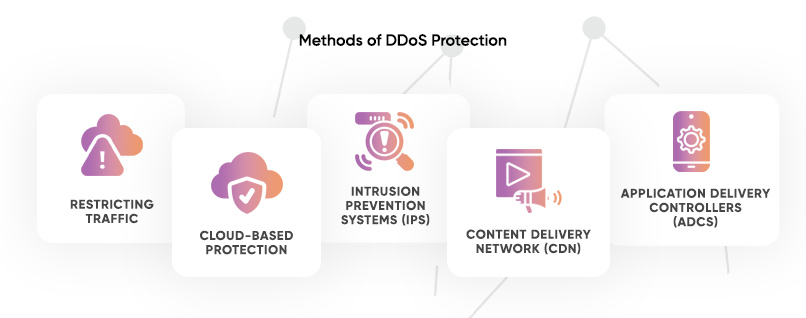In today’s digital age, DDoS (Distributed Denial of Service) attacks have become more common than ever before. These attacks are designed to make a website or network inaccessible to its intended users by disrupting the services of its hosting server through overwhelming traffic, making it unavailable for legitimate users. This article aims to provide a detailed overview of DDoS attacks, their effects, and various ways of ensuring protection against them.
DDoS Attacks: What are they?
DDoS attacks occur when thousands of requests at once are sent to a server, which overwhelms its resources and makes it unresponsive. The attack may come from multiple sources, such as botnets, amplification attacks, and application-layer attacks, to name a few.
The effects of DDoS attacks can be catastrophic for organizations that rely on their websites or digital infrastructure. These attacks can result in financial losses, damaged reputation, and even loss of sensitive data. Therefore, it is essential to take measures to protect your digital assets.
DDoS protected hosting: what levels of DDoS protection are offered by providers
Hosting providers offer various levels of protection to mitigate the risks posed by DDoS attacks. These include:
- Basic Protection
Hosting providers offer basic DDoS protection by limiting the number of requests that can be made to the server. While this may help prevent small-scale attacks, it is often inadequate against larger attacks.
2. Advanced Protection
Advanced DDoS protections utilize techniques such as traffic filtering to identify and block malicious traffic from entering a network. Additionally, it leverages machine learning algorithms to detect and respond to new threats. This type of protection is suitable for mid-sized businesses or higher.
3. Enterprise Protection
Enterprise-level protection employs multi-layered defense mechanisms to guard against sophisticated attacks that incorporate various vectors or sources. This approach involves monitoring, threat intelligence, incident response, and more.
Methods of DDoS Protection
Several methods of DDoS protection exist to prevent or mitigate its effects, including:
- Restricting Traffic
Restricting traffic to addresses that are trusted and known can help prevent a DDoS attack from interrupting services. Additionally, services that are not needed can be shut down or blocked in a similar manner.
2. Cloud-Based Protection
Cloud-based protection involves using a third-party service to monitor and filter incoming and outgoing traffic to a server or website. This approach provides an additional layer of security by identifying and stopping malicious requests.
3. Intrusion Prevention Systems (IPS)
IPS solutions analyze network traffic patterns in real-time and can identify malicious activity that could lead to a DDoS attack. This approach blocks known malicious traffic and can stop an attack in its tracks.
4. Content Delivery Network (CDN)
CDNs distribute incoming traffic to several different servers to reduce the strain on a single server. This approach can help prevent DDoS attacks by reallocating traffic throughout multiple servers.
5. Application Delivery Controllers (ADCs)
ADCs distribute traffic across different servers and manage requests while protecting against DDoS attacks. In addition, the use of a web application firewall can help block traffic from sources deemed suspicious.

The best multi-layered DDoS attack protection solution
DDoS attacks are a significant threat to modern digital infrastructure, including websites and networks. Its effects can be challenging, and it’s essential to understand and implement the right solutions. Hosting providers offer multiple levels of protection, and it’s essential to invest in adequate security measures to protect digital assets. Restricting traffic, cloud-based protection, IPS, CDNs, and ADCs are some of the methods to ensure protection against DDoS attacks. Organizations should adopt a multi-layered and proactive approach to protect their digital infrastructure continuously.
The best DDoS protection: how to prevent and protect against attacks
Write us a message to get additional information.
or book a free consultation